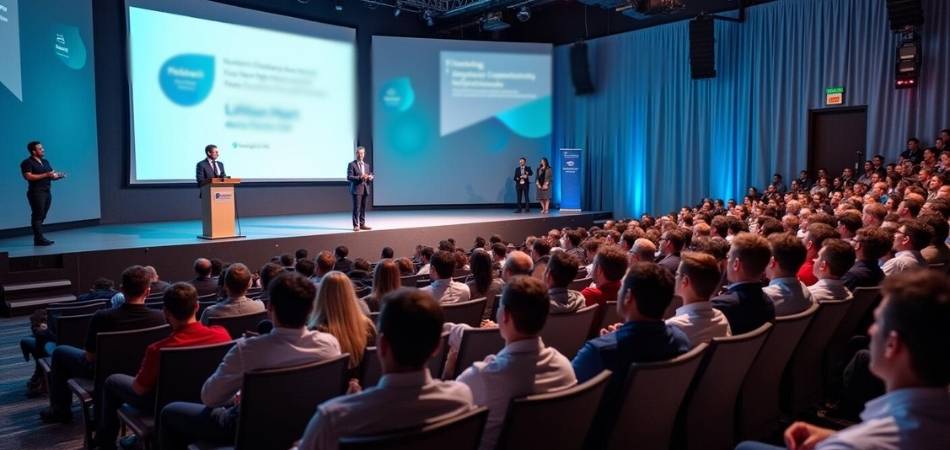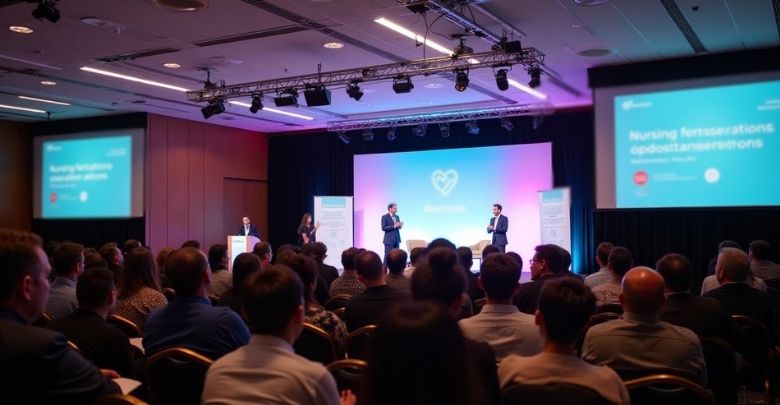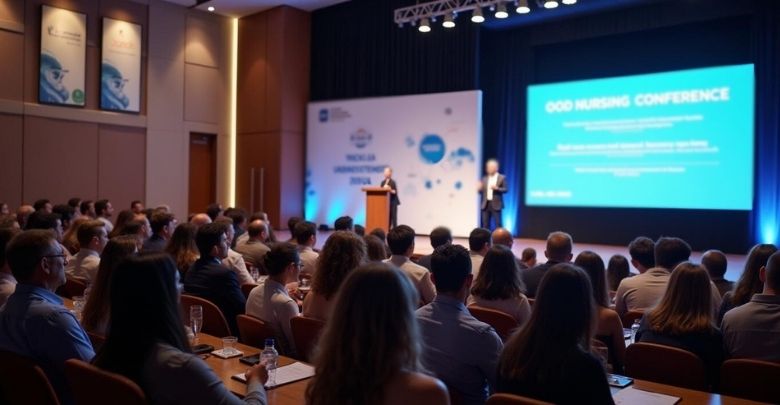Cloud engineering conferences are exciting events that bring together tech enthusiasts, professionals, and innovators to explore the latest advancements in cloud technologies. If you’re planning to attend one, you might be wondering, how long is a cloud engineering conference? Knowing the duration can help you plan your time effectively.
Typically, cloud engineering conferences last anywhere from a few hours to multiple days, depending on the format and scope. Single-day events often focus on keynotes and breakout sessions, while multi-day conferences offer in-depth workshops, networking, and hands-on learning experiences.
Curious about what influences the length of these events and how to make the most of them? Keep reading to uncover valuable insights and expert tips!
How Long Is a Cloud Engineering Conference —Duration & Formats
Cloud engineering conferences are vibrant hubs where professionals gather to share knowledge, network, and explore the latest trends in cloud technology. The duration of these events varies greatly and is influenced by several factors. Understanding these influences helps attendees plan their schedules and make the most of these valuable opportunities.

Scope and Purpose of the Conference
The primary aim of the conference plays a significant role in determining its length. Smaller conferences focused on specific topics or tools might last just a few hours, while extensive events covering diverse cloud engineering aspects often span multiple days. The broader the agenda, the more time organizers allocate to ensure every topic is covered effectively.
Number of Keynote Speakers and Sessions
The variety and number of sessions heavily influence how long the event will last. Keynote speakers, breakout sessions, and panel discussions usually require more time. For example, a cloud engineering conference in Canada or other countries may include an extended lineup of sessions to showcase both regional and international innovations in the cloud domain. By balancing quality with time efficiency, organizers ensure attendees gain maximum value.
Hands-On Workshops and Training
Practical workshops and hands-on training sessions can extend the duration of a cloud engineering conference. These interactive experiences require more time than standard lectures, as participants engage directly with tools, technologies, and case studies. Events emphasizing skill-building often span multiple days to provide in-depth learning opportunities.
Networking and Social Events
Networking is a key component of most conferences, and events that include dedicated time for socializing often have longer schedules. Evening mixers, luncheons, and meet-and-greets extend the overall duration. These sessions allow attendees to connect with peers, exchange ideas, and forge valuable professional relationships.
Conference Format
The format of the event—virtual or in-person—also impacts its length. Virtual conferences tend to be shorter, with concise sessions spread over one or two days to maintain engagement. In contrast, in-person events often last longer, offering immersive experiences such as live demonstrations, exhibitions, and physical networking opportunities.
Industry Trends and Innovations
The pace of innovation in cloud technology influences the length of a conference. Events highlighting advanced tools, services, and practices might require additional time to cover emerging trends comprehensively. Organizers often schedule extra sessions to accommodate evolving topics and ensure participants stay ahead in their field.
Audience Profile and Expectations
The conference’s target audience also plays a role in its duration. Events catering to senior professionals may focus on concise, high-impact sessions, while those aimed at beginners or mixed audiences often include more extensive schedules. This ensures the content aligns with the attendees’ expertise and learning objectives.
Cloud engineering conferences vary in length, shaped by a blend of factors like scope, format, and audience needs. Whether it’s a few hours or several days, these events provide valuable insights and networking opportunities. Proper planning ensures you make the most of your conference experience.
Typical Formats of Cloud Engineering Conferences
Cloud engineering conferences are designed to cater to diverse audiences, offering various formats to suit different preferences and professional goals. Whether you’re a beginner or an expert, these events aim to provide value through engaging sessions and activities. Here’s an overview of the most common formats you’ll encounter.
Keynote Presentations
Keynotes are a staple of most cloud engineering conferences, setting the tone with insights from industry leaders. These sessions typically highlight emerging trends, challenges, and opportunities in the cloud domain. Attendees gain a broader perspective, making keynotes essential for understanding the bigger picture.
Breakout Sessions
Smaller, focused breakout sessions allow participants to dive deep into specific topics like cloud architecture, security, or DevOps. The topics discussed at cloud engineering conferences often shape the structure and focus of these sessions, ensuring they address the most relevant and timely industry challenges. Breakout sessions are ideal for exploring niche areas or addressing challenges unique to your role.
Hands-On Workshops
Workshops provide practical, skill-based learning through guided exercises and real-world applications. Participants work on tasks like deploying cloud environments or optimizing workflows using industry tools. This format ensures attendees leave with actionable skills and a better knowledge of the technology.
Networking Events
Networking opportunities such as mixers, panel discussions, and coffee breaks allow participants to connect with peers and industry professionals. Building relationships during these informal moments often leads to valuable collaborations or career opportunities. Networking events are as much about learning as they are about fostering meaningful connections.
Exhibitor Booths and Tech Demos
Conference exhibitions showcase the latest cloud technologies, tools, and services from leading companies. Attendees can engage with vendors, ask questions, and experience live demonstrations. These sessions help participants discover innovative solutions and evaluate tools that can benefit their projects or businesses.
Each format contributes to a well-rounded conference experience, ensuring attendees learn, network, and grow. Choosing the right sessions based on your interests and goals will help you maximize the value of any cloud engineering conference you attend.
Multi-Day vs. Single-Day Cloud Engineering Conferences: What’s the Difference?
Cloud engineering conferences come in a variety of formats, each designed to cater to different needs and schedules. The timing of these events can significantly impact the depth of content, networking opportunities, and the overall experience. Understanding the differences between single-day and multi-day conferences helps you choose the right format for your goals.
Single-Day Conferences: Compact and Time-Efficient
Single-day conferences are designed to deliver a packed agenda within a limited timeframe. These events typically feature back-to-back sessions with minimal breaks, focusing on high-priority topics that appeal to a broad audience. While this format is ideal for professionals with tight schedules, it often sacrifices deeper exploration of complex subjects and limits time for networking.
Multi-Day Conferences: In-Depth and Comprehensive
Multi-day conferences provide the luxury of time, allowing organizers to include a broader range of topics and activities. Sessions are often spread out, with ample breaks for networking, interactive workshops, and Q&A discussions. The extended schedule enables attendees to immerse themselves in specific subjects and gain a more well-rounded understanding of cloud engineering trends and innovations.
Flexibility in Agenda and Participation
The timing of multi-day conferences offers greater flexibility, enabling attendees to choose sessions that align with their interests. With single-day events, the compact nature of the schedule can make it challenging to attend everything you find relevant. Multi-day formats also allow more casual interactions during downtime, creating a more relaxed and engaging atmosphere.
Time for Practical Learning and Hands-On Activities
Multi-day conferences often dedicate specific slots to workshops, case studies, or collaborative activities. These sessions require more time to execute effectively and are rarely included in single-day events. Having multiple days ensures attendees have the chance to apply concepts and learn through hands-on experience.
The choice between single-day and multi-day conferences largely depends on your schedule and the depth of knowledge you wish to gain. If time permits, the extended duration of multi-day events offers a more immersive and enriching experience. However, single-day events are excellent for quick learning and efficient use of your time.
How to Plan for the Duration of a Cloud Engineering Conference?
Attending a cloud engineering conference is an exciting opportunity to learn, network, and grow professionally. However, making the most of your time requires thoughtful planning. By preparing effectively, you can ensure every moment spent at the conference adds value to your experience.
Review the Agenda Thoroughly
Understanding the schedule in advance is essential for maximizing your time. Study the agenda to identify key sessions, workshops, and networking events that align with your goals. Prioritizing activities is essential for making the most of a cloud engineering conference, ensuring you don’t miss out on opportunities that matter most to you.
Allocate Time for Networking
Conferences are excellent places to meet industry peers, mentors, and potential collaborators. Set aside specific time slots to attend networking sessions or connect with others during breaks. Building relationships during these moments can often be as impactful as attending sessions.
Plan for Breaks and Flexibility
While conferences are packed with activities, it’s essential to schedule downtime to recharge. Taking short breaks allows you to stay focused and make the most of longer sessions. Being flexible with your schedule also helps you adapt to unexpected opportunities or last-minute changes.
Utilize Technology for Time Management
Use conference apps or digital tools to track sessions and set reminders. These resources help you stay organized and make quick adjustments to your schedule. The technology ensures you don’t miss important events and helps you manage overlapping activities efficiently.
Prepare in Advance for Workshops
If attending hands-on workshops, review the prerequisites and bring the necessary tools or devices. Completing pre-event tasks ensures you’re ready to engage fully and gain the maximum benefit. Being prepared demonstrates professionalism and helps you stay ahead of the curve.
Thoughtful planning transforms a busy conference schedule into a seamless, productive experience. By prioritizing your goals and preparing in advance, you can make the most of the duration and leave with valuable insights and connections.
Why Does the Length of a Cloud Engineering Conference Matter?
The duration of a cloud engineering conference is more than just a logistical detail; it directly impacts the value attendees can derive from the event. A well-balanced length ensures participants have ample time to engage, learn, and network effectively. Understanding why conference length matters helps attendees plan better and maximize their experience.
Time to Absorb Knowledge
A thoughtfully planned conference duration gives attendees enough time to dive deep into technical topics. Sessions on complex concepts like cloud architecture or DevOps require adequate time for in-depth explanations and Q&A. Short events may feel rushed, while longer ones ensure participants grasp the content thoroughly.
Opportunities for Networking
The length of the conference significantly affects networking opportunities. Extended events often include dedicated sessions for socializing and informal interactions, allowing participants to build meaningful professional relationships. A shorter schedule may limit such opportunities, reducing the chance to connect with peers and industry leaders.
Balancing Sessions and Breaks
A balanced duration ensures that attendees can attend sessions without feeling overwhelmed. Including breaks and downtime in a longer conference allows participants to recharge and maintain focus. This balance ultimately enhances the overall experience, as attendees can remain engaged throughout the event.
Flexibility in Scheduling Activities
Longer conferences provide flexibility in choosing sessions that match individual interests and needs. Attendees can explore diverse topics, from technical workshops to strategic discussions, without feeling rushed. A well-paced schedule ensures a richer and more tailored learning experience for everyone.
The length of a cloud engineering conference directly influences its effectiveness in delivering value to attendees. Whether it’s a single-day event or a multi-day experience, a well-planned duration ensures a productive and enriching experience for all participants.
Frequently Asked Questions
When considering attending a cloud engineering conference, you might have a few additional questions beyond just the event’s duration. Here are some common queries people often ask, along with detailed, easy-to-understand answers.
Are Cloud Engineering Conferences Suitable for Beginners?
Absolutely! Many cloud engineering conferences include beginner-friendly sessions, workshops, and keynotes to help newcomers get up to speed. These events often feature experts who break down complex topics into digestible insights. It’s a great way to start your journey in cloud technology.
Do I Need Technical Expertise to Attend a Cloud Engineering Conference?
Not necessarily. While some sessions are intended for advanced professionals, many conferences offer general overviews, business-oriented discussions, and basic cloud technology insights. Whether you’re a developer, manager, or enthusiast, there’s something valuable for everyone to learn.
What Kind of Networking Opportunities Are Available at Cloud Engineering Conferences?
Networking is a major highlight of these events. Attendees can connect with industry leaders, peers, and recruiters during breaks, workshops, or special networking sessions. Many conferences even host casual meetups or social events to foster meaningful connections.
Do Cloud Engineering Conferences Include Certifications or Training?
Yes, many conferences provide opportunities to earn certifications or complete hands-on training sessions. These are often add-ons to the main event and allow attendees to gain practical skills or credentials to advance their careers.
What Should I Bring to a Cloud Engineering Conference?
Bring essentials like a notebook, business cards, and your event pass. If it’s a tech-oriented event, consider bringing your laptop for hands-on sessions. Comfortable clothing and a curious mindset will help you make the most of the experience.
Final Words
Engaging in a cloud engineering conference is an exciting opportunity to explore the latest trends, connect with industry leaders, and sharpen your skills. If you’ve been wondering, how long is a cloud engineering conference, the answer varies based on the event’s scope and structure.
From short, focused sessions to multi-day immersive experiences, these events are designed to cater to diverse interests and professional needs. No matter the duration, they offer a wealth of knowledge and opportunities for growth, making them a valuable investment of your time.
Now that you know how long is a cloud engineering conference, why not take the next step? Plan your participation, pack your essentials, and make the most of every moment to advance your career in cloud technology.







